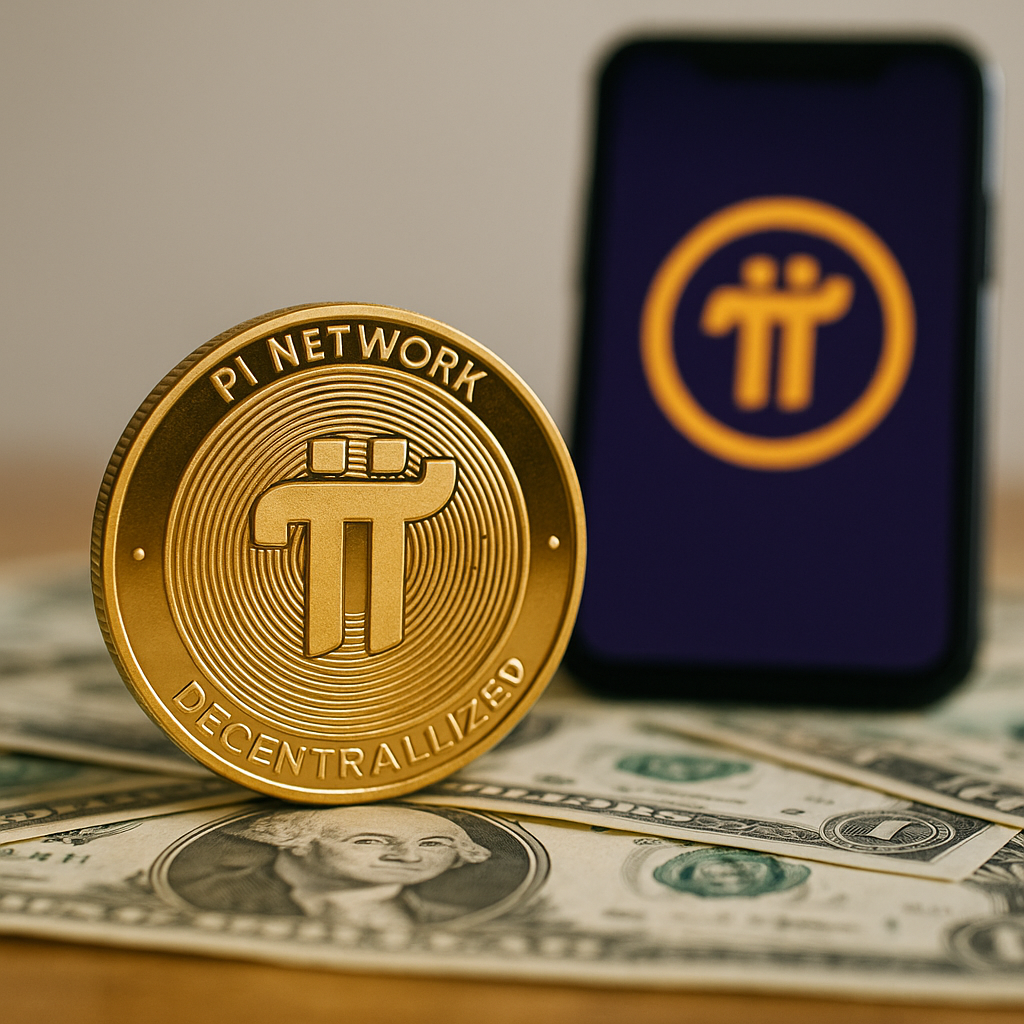Pi Coin, a cryptocurrency mined via smartphones, is gaining attention as a potential real-life currency in the evolving crypto landscape.
Launched in 2019 by a team of Stanford PhDs, the Pi Network began as a centralized project with the aim of becoming fully decentralized.
Its biggest appeal lies in mobile accessibility, but whether it can mature into a legitimate medium of exchange remains an open question.

What Is Pi Coin?
Pi Network is a blockchain-based mobile-first crypto project where users mine Pi Coins by simply tapping a button on their smartphones daily.
Unlike Bitcoin or Ethereum, it does not rely on energy-intensive hardware or high computational resources.
This user-friendly design is intended to promote mass adoption among everyday users.
Mining Model: Pi vs. Bitcoin
Bitcoin uses Proof-of-Work (PoW), requiring significant electricity and mining rigs.
Pi Network introduces a novel model inspired by Social Trust Graphs, allowing users to earn Pi through their verified social circles.
This creates a “lightweight” mining experience while still attempting to validate transactions securely.
Recent Updates and Community Response
On May 14, 2025, Pi Network announced that a major ecosystem roadmap would be unveiled, leading to renewed optimism within the community.
With rumors of listings on HTX and wallet activity detected on Binance, the price of Pi briefly surged past $1.19 before stabilizing around $1.07.
KYC and Real-World Use Cases
To join the open mainnet, users must complete a Know Your Customer (KYC) verification process.
Only verified users are allowed to transfer or trade Pi within the ecosystem.
Several decentralized apps (dApps), including online stores and P2P services, are already accessible through the Pi Browser.
In some communities, users have experimented with buying coffee, groceries, and even second-hand goods using Pi.
Strengths and Concerns
With over 30 million active users worldwide, Pi Coin’s community is one of its strongest assets.
However, Pi is not yet listed on major exchanges, and its value remains speculative.
Another concern is the pre-mined nature of the coin—early adopters hold large reserves, potentially impacting future price stability and token distribution fairness.
Outlook: Can Pi Coin Succeed?
If Pi Coin successfully launches its open mainnet, gains regulatory clarity, and establishes liquidity via exchange listings, it may become the first mobile-native cryptocurrency adopted for real-world payments.
But as of now, it remains a high-potential project navigating technical hurdles and the trust of global users.
For investors and developers alike, the next 6 to 12 months will be critical in determining whether Pi becomes a practical currency or a missed opportunity.
